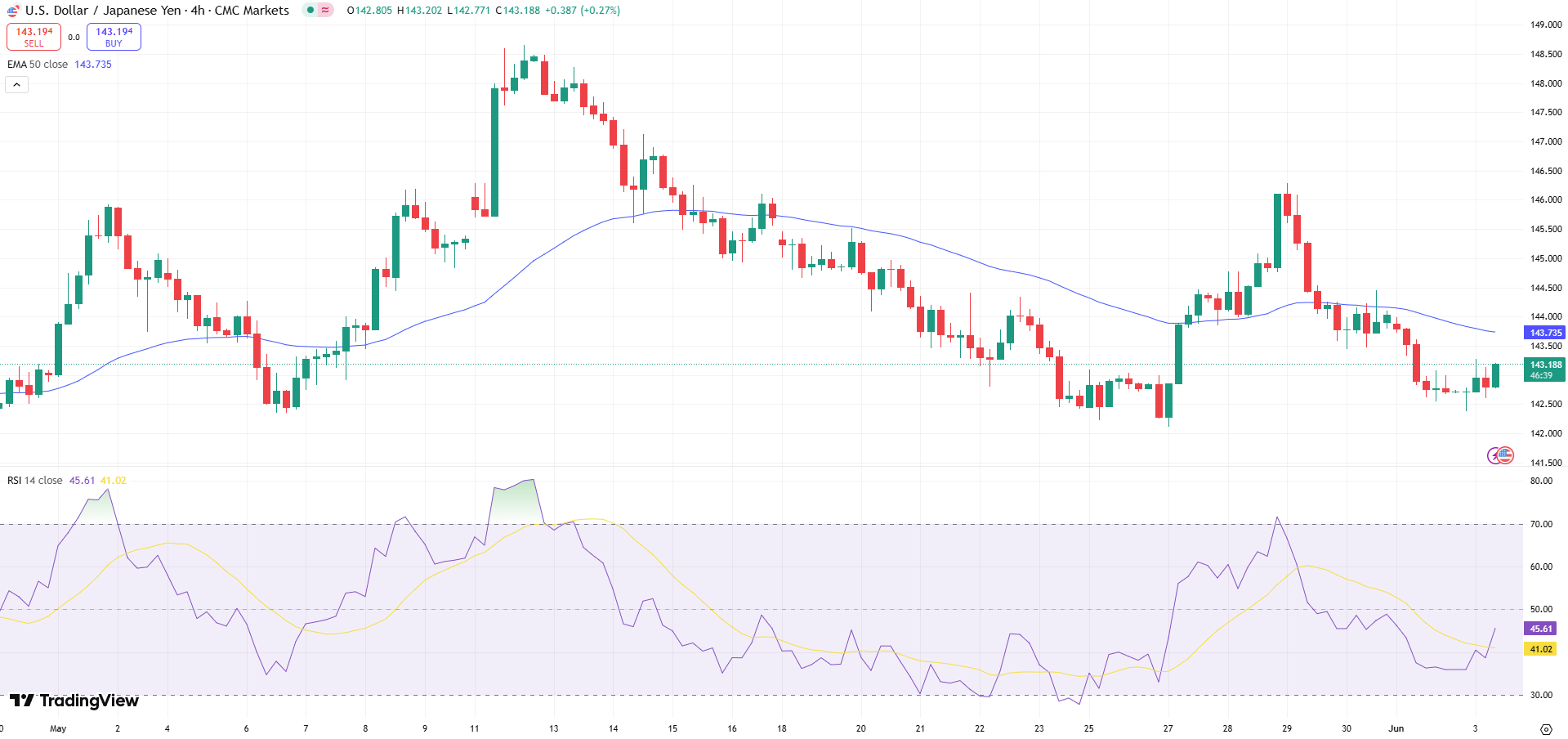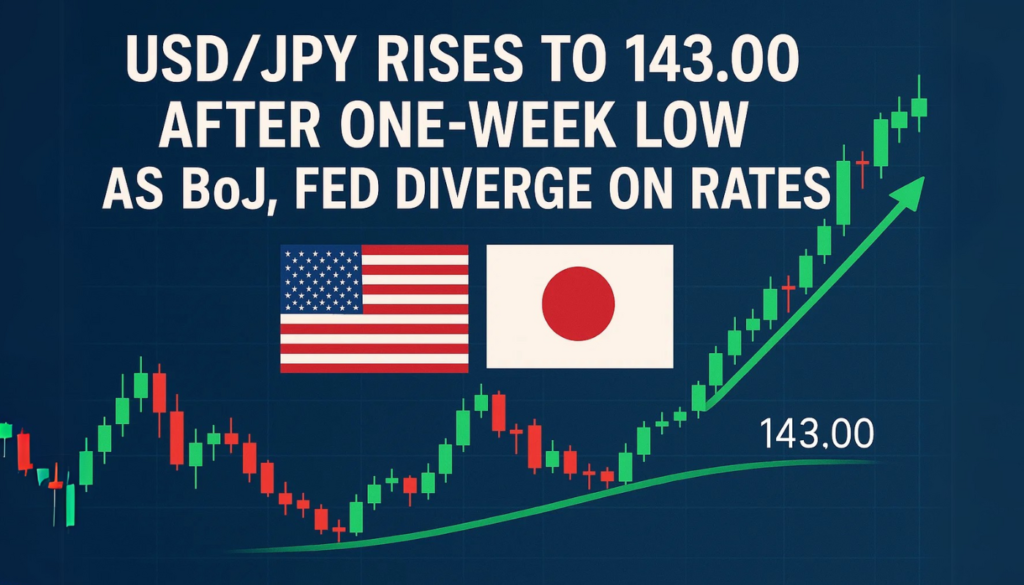The USD/JPY pair rebounded to 143.00 during Tuesday’s Asian trading, snapping a recent slide to one-week lows. The recovery was triggered by a modest rebound in the U.S. Dollar, which had slumped to six-week lows against major peers. However, fresh selling in the Japanese Yen followed comments from Bank of Japan (BoJ) Governor Kazuo Ueda, hinting at the possibility of further interest rate hikes.
BoJ remains under pressure after Tokyo’s Consumer Price Index (CPI) exceeded the central bank’s 2% inflation target for the third consecutive year, driven largely by persistently high food prices. These developments have revived speculation of additional BoJ tightening, supporting yen strength in recent weeks.
However, the USD’s slight recovery and dovish Fed expectations are creating a tug-of-war in the pair’s direction, with short-term traders watching key technical levels closely.
Technical Signals Point to Volatility
Despite Tuesday’s bounce, technical patterns continue to favor bearish sentiment for USD/JPY. Last week, the pair failed to break above the 61.8% Fibonacci retracement level, pulling back below its 200-period Simple Moving Average (SMA) on the 4-hour chart—often considered a bearish trigger.
Key Technical Levels:
- Immediate resistance: 144.00 (200-period SMA)
- Next barrier: 144.30–145.00 range
- Critical resistance: 146.25 (2-week high)
- Near-term support: 143.00
- Key downside target: 142.10 (monthly low)
The broader outlook remains sensitive to U.S. data and central bank rhetoric. Traders are pricing in a 70% chance of a Fed rate cut in September, with another possible cut by December.

Global Risks Drive Safe-Haven Flows
Geopolitical tensions and trade uncertainties continue to dominate market sentiment. Safe-haven demand remains high, favoring the yen, particularly amid intensifying global flashpoints:
- Ukraine-Russia conflict escalates with Kyiv’s drone strike on five Russian air bases.
- Middle East tensions flare as Israel intensifies Gaza strikes and Houthi rebels target Tel Aviv.
- U.S.-China trade friction grows as President Trump threatens a 50% tariff on steel imports.
At the same time, U.S. inflation data from April showed signs of cooling. The core Personal Consumption Expenditure (PCE) Index fell to 2.5% YoY, reinforcing dovish Fed expectations.
Investors are now closely monitoring ISM Manufacturing PMI and Fed Chair Powell’s upcoming remarks for further cues on rate direction and short-term volatility.


